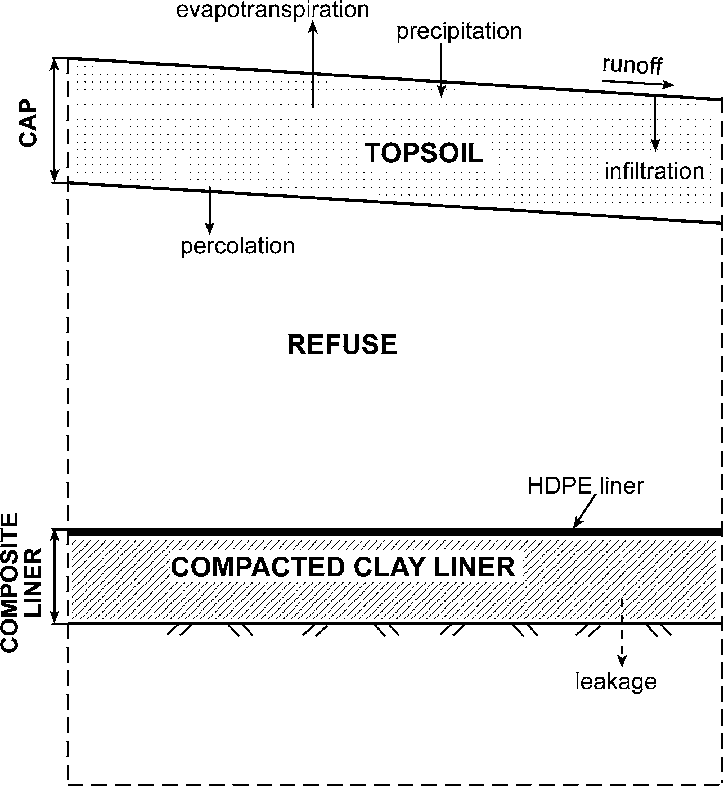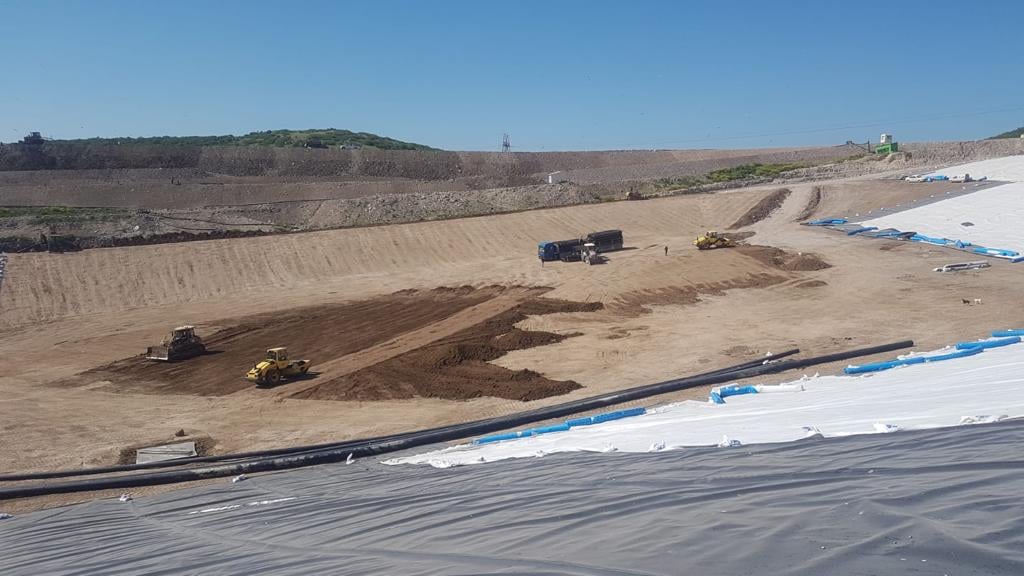Market Development of HDPE Geomembrane in Landfill
In recent years, with the generation of a large amount of solid waste such as production waste, domestic waste, commercial waste and tourist waste, landfills have gradually become one of the final disposal methods of urban waste. The landfill liner system is to lay solid waste in a thin layer of a certain thickness on a site with good anti-seepage performance, which is mechanically compacted, and then covered with soil for disinfection. In this process, a large amount of geosynthetic materials will be used. Then, in the field of sanitary landfill, geosynthetics are facing huge development opportunities.

At present, the commonly used landfill technology methods in China include vertical water interception sheet pile, vertical water interception geological membrane, bottom sealing technology of rotary jet grouting, and underground mud section. The surrounding enclosures in sanitary landfills can be reinforced by means of anti-seepage, water isolation, isolation and reverse filtration, drainage, reinforcement, etc. Prevent landfill leachate from seeping out, guide the leachate to drain away, and recharge it to prevent garbage from sliding and being covered by garbage. HDPE geomembrane plays the main force of materials. As a polymer composite material, HDPE geomembrane has good tensile properties, strong corrosion resistance, high anti-aging properties, excellent physical and chemical properties, and has a service life of more than 50 years. HDPE landfill liner and other geosynthetics are properly deployed according to environmental requirements, and the most reasonable design scheme has been introduced, which has become the most correct practice recognized by the market.
In terms of future development, referring to the characteristics of China's sanitary landfills, the development and utilization of geosynthetic materials, the development and application of related monitoring and quality control technologies such as landfill liner leakage detection, and the standards and specifications of sanitary landfills The optimization and specification of geosynthetics in China is also urgent.
In the late 1980s electrical techniques were being introduced to locate leaks in geomembranes covered by liquids and by soils. Approximately 25% of leaks are introduced during installation of the geomembrane itself and 75% are introduced as the geomembrane is covered. The number of leaks per unit area decreases with liner area and as the relative amount of detail work in the installation decreases. Leak frequency drops from about 12/ha to about 2/ha above 2 ha. The electrical surveys showed that most liner installations leaked to different degrees mostly as a function of the effectiveness of the construction quality assurance (CQA) that was performed. In an attempt to minimize leakage, geomembranes were combined with compacted clay liners, and later geosynthetic clay liners (GCLs), to make composite liners. With GCLs, typically two layers of geotextiles with bentonite granules between them and needlepunched together, the principle is that a leak in the geomembrane will hydrate the bentonite causing it to swell into and seal the leak.

The importance of good drainage Nowhere is this more important at present than in wastewater treatment plants where bacterial activity in leaked water can continue and where additional reaction with subgrade vegetative matter generates large volumes of methane and other gases. With standing water under the liner there is no pathway for these gases to escape to the gas vents placed at the tops of the slopes. The gases accumulate and the liner rises until it breaks the water surface and becomes a ‘whale’. Whales usually contain gas above the water level and the water level under the liner is the same as that above the liner. There must be a good drainage system under the liner from which the water can be removed and it must have sufficient capacity that any generated gases can vent upgradient to the slope vents. A typical non-woven geotextile cushion is not adequate. With the importance of identifying leaks before major problems occur it is becoming a regulated requirement for geoelectrical liner integrity surveys to be performed on all primary geomembrane liners as the final stage of CQA after the liner has been covered to depths between 600 mm and 1 metre. At this stage, further activity on the soil cover surface is not likely to cause further damage to the geomembrane, yet it can still easily be exposed to make repairs. In fact, New York State Department of Environmental Conservation, having seen the practical benefits of performing surveys on the primary geomembrane, is adding a requirement to perform surveys on the floor area of secondary geomembranes.
Landfill capping To minimize the amount of primary leachate that has to be treated and disposed of, geomembranes have also been introduced to cap landfills, both to prevent the ingress of precipitation and to capture and remove landfill gas (LFG). While HDPE has also been used in caps, the preferred material is often linear low density polyethylene (LLDPE) or another more flexible material such as PVC or flexible polypropylene (fPP) that will better accommodate the strains and resultant stresses that are associated with differential settlements within the waste. Thus, the geomembrane must be able to conform to the profile of the differential settlement without inducing stresses that could, for instance, initiate stress cracking. The less crystalline materials such as LLDPE and fPP are not susceptible to SC in the as-manufactured condition. This requirement also clearly demonstrates that the ductility of a geomembrane is far more important than its strength in relation to long-term performance. Strength is only of importance in being able to handle the rigours of installation.




